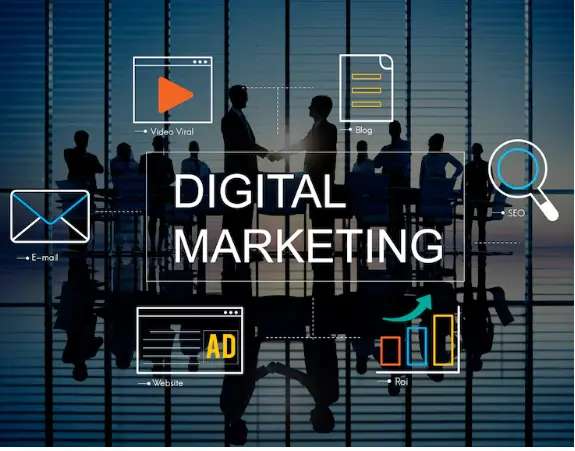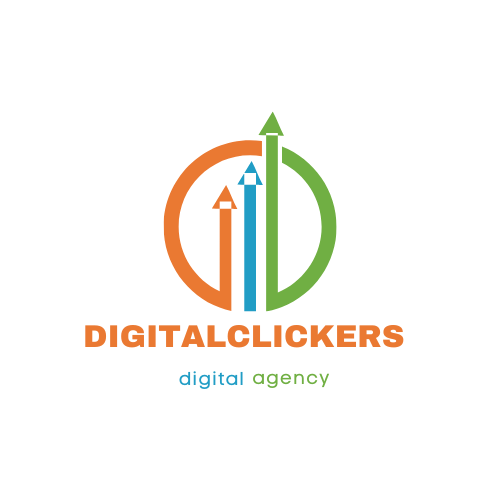Online Branding Technique
Digital marketing encompasses a broad range of online activities and tools designed to promote products or services and build brand identity. This essay explores how digital marketing serves as a pivotal online branding technique, highlighting its key components, benefits, challenges, and best practices.
1. Understanding Digital Marketing and Branding
Digital Marketing refers to the use of online platforms and technologies to reach consumers, promote products, and achieve business goals. It includes various strategies such as content marketing, social media marketing, search engine optimization, email marketing, and pay-per-click advertising.
Branding, on the other hand, is the process of creating a unique name, symbol, or design that identifies and differentiates a product or company from others. Effective branding helps businesses establish a strong identity, build trust with consumers, and create a lasting impression.

Digital marketing and branding are interlinked digital marketing techniques that help amplify a brand’s presence online and ensure it reaches the target audience effectively. The integration of these strategies is crucial for establishing a coherent and impactful brand image in the digital realm.
2. Key Components of Digital Marketing for Branding
a. Content Marketing
Content marketing is creating and sharing , and consistent content to attract and engage a targeted audience. High-quality content—whether blog posts, articles, infographics, or videos—helps establish a brand’s authority and credibility. For instance, a tech company might publish insightful articles about industry trends, positioning itself as a thought leader.
b. Social Media Marketing
Social media platforms like Facebook, Twitter, Instagram, and LinkedIn provide a powerful avenue for brand engagement. Social media marketing involves creating and managing content tailored to each platform to interact with followers, share brand stories, and promote products. Brands can use social media to run targeted ads, engage in conversations, and build a community around their products or services.
c. Search Engine Optimization
Search engine optimization is content to rank higher in search engine results pages. By improving keyword relevance, enhancing site structure, and earning backlinks, businesses can increase their visibility and attract organic traffic. High search rankings contribute to a brand’s credibility and authority in its field.
d. Pay-Per-Click (PPC) Advertising
PPC advertising placing ads on search engines or social media platforms and paying only when users click on them. PPC campaigns, such as Google Ads, allow businesses to target specific keywords and demographics, ensuring their brand reaches the right audience. PPC can provide immediate visibility and measurable results, complementing organic marketing efforts.

e. Email Marketing
Email marketing involves sending targeted messages to a list of subscribers to nurture leads, build relationships, and promote brand awareness. Personalised and well-crafted email campaigns can drive engagement and reinforce brand messaging. Newsletters, promotional offers, and updates are common types of email marketing content.
3. Benefits of Digital Marketing for Branding
a. Increased Reach and Visibility
Digital marketing allows brands to reach a global audience with relative ease. Through SEO, social media, and PPC, businesses can enhance their visibility and connect with potential customers across various platforms. This broad reach helps brands to establish themselves in the minds of consumers worldwide.
b. Cost-Effectiveness
Compared to traditional marketing methods, digital marketing is often more cost-effective. Many digital marketing tools and platforms offer flexible pricing models, allowing businesses to tailor their budgets according to their needs. For instance, social media advertising and content marketing can be scaled to fit different budgets.

c. Enhanced Targeting and Personalization
Digital marketing provides sophisticated targeting options. Advertisers can segment their audience based on demographics, interests, and behaviours, ensuring that their message reaches the most relevant individuals. Personalization further enhances the effectiveness of marketing efforts, making consumers feel valued and understood.
d. Measurable Results
One of the significant advantages of digital marketing is the ability to track and measure performance. Tools like Google Analytics and social media insights provide detailed data on campaign performance, allowing businesses to assess their ROI and make data-driven decisions. Metrics such as website traffic, conversion rates, and engagement levels provide valuable insights into branding effectiveness.
e. Flexibility and Agility
Digital marketing campaigns can be quickly adjusted in response to performance data or changing market conditions. This flexibility allows brands to experiment with different strategies, optimise their efforts, and adapt to new trends, ensuring that their branding remains relevant and effective.
4. Challenges in Digital Marketing for Branding
a. Information Overload
With the vast amount of content and advertising flooding the digital space, it can be challenging for brands to stand out. Consumers are bombarded with information daily, making it difficult for individual brands to capture and retain their attention.
b. Rapid Technological Changes
The digital landscape is continually evolving, with new technologies, platforms, and trends emerging regularly. Brands must stay updated with these changes and adapt their strategies accordingly. This requires ongoing learning and investment in new tools and techniques.
c. Maintaining Consistent Brand Messaging
Ensuring consistent brand messaging across various digital channels can be challenging. Different platforms may have different formats and audience expectations, making it essential for brands to tailor their content while maintaining a unified brand voice.

d. Managing Online Reputation
In the digital age, a brand’s reputation can be impacted by online reviews, social media comments, and other user-generated content. Managing and responding to feedback—both positive and negative—is crucial for maintaining a positive brand image and addressing potential issues promptly.
5. Best Practices for Using Digital Marketing in Branding
a. Develop a Comprehensive Digital Strategy
A well-defined digital marketing strategy is essential for effective branding. This involves setting clear goals, identifying target audiences, and choosing the right channels and tactics. A comprehensive strategy ensures that all digital marketing efforts align with the overall brand objectives.
b. Create High-Quality Content
Invest in creating valuable and engaging content that resonates with your audience. High-quality content not only enhances brand credibility but also drives traffic and fosters engagement. Incorporate storytelling techniques to make your brand’s message more compelling and memorable.
c. Leverage Data and Analytics
Utilise data and analytics to monitor campaign performance, understand audience behaviour, and refine your strategies. Regularly review key metrics to identify trends, measure success, and make informed adjustments to your branding efforts.

d. Maintain Consistency Across Channels
Ensure that your brand’s voice, messaging, and visual elements are consistent across all digital channels. Consistency helps reinforce brand identity and creates a cohesive experience for your audience, enhancing recognition and trust.
e. Engage with Your Audience
Actively engage with your audience through social media, email, and other digital platforms. Respond to comments, answer questions, and participate in conversations to build relationships and foster a sense of community around your brand.
f. Stay Updated with Trends
Keep abreast of the latest digital marketing trends and technologies. Staying informed allows you to leverage new opportunities, experiment with innovative strategies, and maintain a competitive edge in the digital space.
6. brand consistency across diverse digital platforms
Digital marketing has revolutionized the way brands engage with their audiences, but it also presents several challenges that can impact brand effectiveness and consistency. As brands extend their presence across to social media, search engines, email, and other digital channels, ensuring a unified voice, message, and visual identity becomes increasingly complex. Each platform has its unique characteristics and audience behaviors, making it difficult to maintain a coherent brand image. Inconsistent branding can confuse customers and dilute the brand’s overall message, undermining efforts to build a strong, recognizable identity.
For more information click here

7.Rapidly changing digital landscape.
Another major challenge is navigating the rapidly changing digital landscape. Digital marketing trends and technologies evolve at a breakneck pace, and staying ahead requires continuous adaptation. Emerging platforms, new advertising technologies, and shifting consumer behaviors necessitate constant learning and strategic adjustments. For instance, the rise of artificial intelligence and machine learning in digital advertising requires marketers to adapt their strategies to leverage these tools effectively. Additionally, algorithm changes on platforms like Google and Facebook can drastically affect brand visibility and engagement, requiring brands to be agile and responsive in their strategies.
Addressing these challenges requires a well-defined digital marketing strategy that emphasizes consistency while being adaptable to change. Brands must invest in ongoing training, stay informed about industry trends, and leverage data-driven insights to refine their approaches. By doing so, they can navigate the complexities of digital marketing and build a strong, cohesive brand presence in an ever-evolving digital world.

Conclusion
Digital marketing has become an indispensable tool for online branding, offering businesses a dynamic and cost-effective way to reach and engage their target audience. By utilising various digital marketing techniques—such as content marketing, social media, SEO, PPC, and email marketing—brands can enhance their visibility, build credibility, and foster strong connections with consumers. However, navigating the complexities of the digital landscape requires careful planning, consistent execution, and ongoing adaptation to emerging trends.
As businesses continue to embrace digital marketing, they must focus on creating valuable content, leveraging data insights, and maintaining a consistent brand presence. By doing so, they can effectively harness the power of digital marketing to achieve their branding goals and thrive in the ever-evolving online environment.
